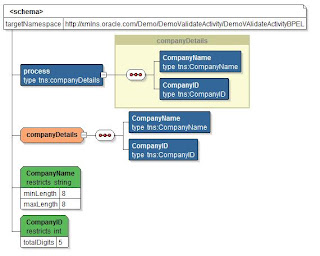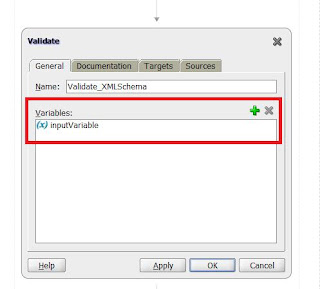We come across situations wherein we need to compare some
elements from two collection and generate the output
I would like to explain the solution using the example:
Input1 contains list of employees and their current salary
and Input2 contains the increment percentage for the employees.
Now input2 might not contain all the employees, so for those
missing employees, the increment is default which is 5%
We need to calculate the new salary for all the employees
from input1
Sample inputs are as below:
Input1:
<EmployeeDetails>
<employeeid>1</employeeid>
<employeename>employeename10</employeename>
<salary>1000</salary>
</EmployeeDetails>
<EmployeeDetails>
<employeeid>2</employeeid>
<employeename>employeename12</employeename>
<salary>10000</salary>
</EmployeeDetails>
<EmployeeDetails>
<employeeid>3</employeeid>
<employeename>employeename14</employeename>
<salary>1500</salary>
</EmployeeDetails>
Input2:
<IncrementDetails>
<employeeid>1</employeeid>
<incrementPercentage>10</incrementPercentage>
</IncrementDetails>
<IncrementDetails>
<employeeid>2</employeeid>
<incrementPercentage>20</incrementPercentage>
</IncrementDetails>
Expected output:
<output
xmlns:client="http://xmlns.oracle.com/CopyTables/LoopTwoNodes/LoopTwoNodesBPEL"
xmlns="http://xmlns.oracle.com/CopyTables/LoopTwoNodes/LoopTwoNodesBPEL">
<client:output>
<client:employeeid>1</client:employeeid>
<client:employeename>employeename10</client:employeename>
<client:salary>1100</client:salary>
<client:comment>Congratulation!! Your increment percentage is
10</client:comment>
</client:output>
<client:output>
<client:employeeid>2</client:employeeid>
<client:employeename>employeename12</client:employeename>
<client:salary>12000</client:salary>
<client:comment>Congratulation!!
Your increment percentage is 20</client:comment>
</client:output>
<client:output>
<client:employeeid>3</client:employeeid>
<client:employeename>employeename14</client:employeename>
<client:salary>1575</client:salary>
<client:comment>Default
increment</client:comment>
</client:output>
</output>
xsl/Transformation to achieve this looks like below:
<xsl:param
name="input2"/>
<xsl:template match="/">
<client:output>
<xsl:for-each select="/client:input1/client:EmployeeDetails">
<xsl:variable
name="loopvar" select="position()"/>
<xsl:choose>
<xsl:when
test='contains(oraext:create-delimited-string($input2/client:input2/client:IncrementDetails/client:employeeid,","),client:employeeid)'>
<xsl:for-each
select="$input2/client:input2/client:IncrementDetails">
<xsl:if
test="client:employeeid =
/client:input1/client:EmployeeDetails[$loopvar]/client:employeeid">
<client:output>
<client:employeeid>
<xsl:value-of
select="/client:input1/client:EmployeeDetails[$loopvar]/client:employeeid"/>
</client:employeeid>
<client:employeename>
<xsl:value-of select="/client:input1/client:EmployeeDetails[$loopvar]/client:employeename"/>
</client:employeename>
<client:salary>
<xsl:value-of
select="/client:input1/client:EmployeeDetails[$loopvar]/client:salary + (/client:input1/client:EmployeeDetails[$loopvar]/client:salary
* (client:incrementPercentage div 100.0))"/>
</client:salary>
<client:comment>
<xsl:value-of
select='concat("Congratulation!! Your increment percentage is ",
client:incrementPercentage)'/>
</client:comment>
</client:output>
</xsl:if>
</xsl:for-each>
</xsl:when>
<xsl:otherwise>
<client:output>
<client:employeeid>
<xsl:value-of
select="client:employeeid"/>
</client:employeeid>
<client:employeename>
<xsl:value-of
select="client:employeename"/>
</client:employeename>
<client:salary>
<xsl:value-of
select="/client:input1/client:EmployeeDetails[$loopvar]/client:salary +
(/client:input1/client:EmployeeDetails[$loopvar]/client:salary * (5.0 div
100.0))"/>
</client:salary>
<client:comment>
<xsl:text
disable-output-escaping="no">Default increment</xsl:text>
</client:comment>
</client:output>
</xsl:otherwise>
</xsl:choose>
</xsl:for-each>
</client:output>
</xsl:template>
Happy Coding J
Cheers,
LetsLearnOracleSOA Team




















